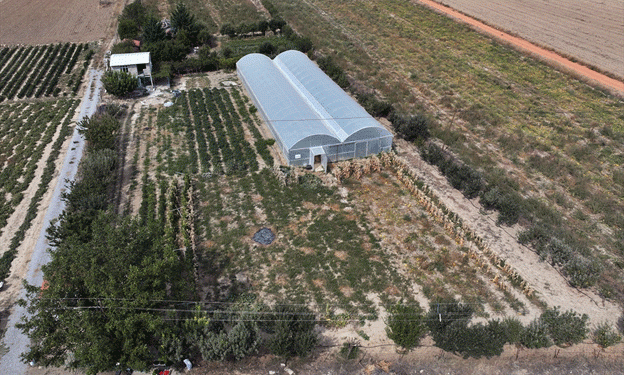In the heart of Konya’s Sarayönü district, a humble farming couple, Seyit and Şerife Genç, are reaping the rewards of their dedication to sustainable agriculture. On their 3,100-square-meter plot in Ladik Mahallesi, they have spent the last 15 years growing a variety of vegetables, earning praise for their commitment to chemical-free, organic farming. Their success took a significant leap forward after receiving government support through the Konya Plain Project (KOP) and the Greenhouse Development Initiative.
The couple, now in their late 50s, began their journey growing vegetables only for their personal consumption. However, as the quality and taste of their produce became well known, word of mouth spread, attracting customers from the city and beyond. Their farm, known for heirloom seeds, pesticide-free practices, and the absence of chemical fertilizers, became a destination for customers seeking the finest in natural vegetables. According to Seyit, “Customers often tell us, ‘This is the best produce we’ve ever tasted. We can’t find anything like this in markets or stores.’”
The Gençs grow everything from tomatoes and cucumbers to watermelons, eggplants, and beans. For years, they sold directly to customers who visited their farm, choosing produce straight from the field. But now, thanks to the 520-square-meter greenhouse they built with government support, they are able to expand production, particularly for winter vegetables that were previously challenging to grow in the region’s cold climate.
Government Support and Greenhouse Advantages
The KOP Region Greenhouse Development Project aims to diversify agricultural production in areas where grain farming is predominant. By supporting farmers like Seyit and Şerife, the program encourages the growth of high-value crops in controlled environments, boosting local incomes and serving as a model for neighboring farmers.
With the new greenhouse, the Gençs can now extend their growing season and protect crops from harsh weather conditions. This is crucial in a region where frost and cold winds can damage outdoor plants, significantly reducing yields. The controlled environment allows for a consistent and optimized growth cycle, ensuring that crops receive just the right amount of water, sunlight, and warmth. As a result, the couple can now produce winter crops such as leafy greens, which are in high demand during the colder months.
Not only does the greenhouse provide a year-round income stream, but it also enhances the quality of their produce. Şerife notes, “We treat our vegetables like children, nurturing them daily to ensure they grow strong and healthy. They require just as much care, if not more, and the results are clear — our customers can taste the difference.”
A Model for Local Farmers
By investing in greenhouse farming, the Gençs have become pioneers in their community. In a region dominated by grain production, their success in vegetable farming provides an alternative model for local farmers seeking to diversify their crops and increase their incomes. Other farmers are now looking to follow their example, encouraged by the couple’s success and the potential profitability of greenhouse farming.
The Gençs’ farm attracts not only local customers but also international visitors, including expatriates from Denmark and Germany. Some even go so far as to bring back fresh produce on road trips to their home countries, further showcasing the farm’s reputation for high-quality vegetables.
One regular customer, Halil Potuk, highlights the unique quality of the produce: “We come here because it’s organic and grown from heirloom seeds. While the prices are comparable to those in the markets, the taste and quality are far superior. Freshly picked from the vine, the produce is unbeatable.”
The story of Seyit and Şerife Genç exemplifies the transformative power of government support in agriculture. With their greenhouse, they have not only secured year-round production but also expanded their business, increased profitability, and become role models for sustainable farming in their region. As more farmers turn to alternative farming methods like greenhouse production, the agricultural landscape of Konya’s Sarayönü district is likely to continue evolving, benefiting both farmers and consumers alike.










